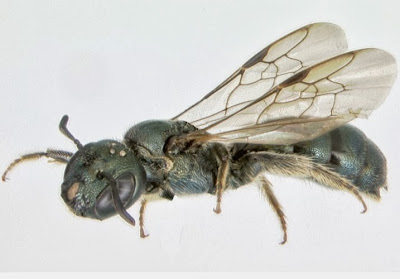For the first time ever, scientists have documented a widespread
extinction of bees that occurred 65 million years ago, concurrent with
the massive event that wiped out land dinosaurs and many flowering
plants. Their findings, published this week in the journal PLOS ONE, could shed light on the current decline in bee species.
Previous studies have suggested a widespread extinction among flowering
plants at the K-T boundary, and it’s long been assumed that the bees who
depended upon those plants would have met the same fate. Yet unlike the
dinosaurs, “there is a relatively poor fossil record of bees,” says
Rehan, making the confirmation of such an extinction difficult.
Rehan and colleagues overcame the lack of fossil evidence for bees with a
technique called molecular phylogenetics. Analyzing DNA sequences of
four “tribes” of 230 species of carpenter bees from every continent
except Antarctica for insight into evolutionary relationships, the
researchers began to see patterns consistent with a mass extinction.
Combining fossil records with the DNA analysis, the researchers could
introduce time into the equation, learning not only how the bees are
related but also how old they are.
“The data told us something major was happening in four different groups
of bees at the same time,” says Rehan, of UNH’s College of Life
Sciences and Agriculture. “And it happened to be the same time as the
dinosaurs went extinct.”
While much of Rehan’s work involves behavioral observation of bees
native to the northeast of North America, this research taps the
computer-heavy bioinformatics side of her research, assembling genomic
data to elucidate similarities and differences among the various species
over time. Marrying observations from the field with genomic data, she
says, paints a fuller picture of these bees’ behaviors over time.
“If you could tell their whole story, maybe people would care more about
protecting them,” she says. Indeed, the findings of this study have
important implications for today’s concern about the loss in diversity
of bees, a pivotal species for agriculture and biodiversity.
“Understanding extinctions and the effects of declines in the past can
help us understand the pollinator decline and the global crisis in
pollinators today,” Rehan says.


No comments:
Post a Comment